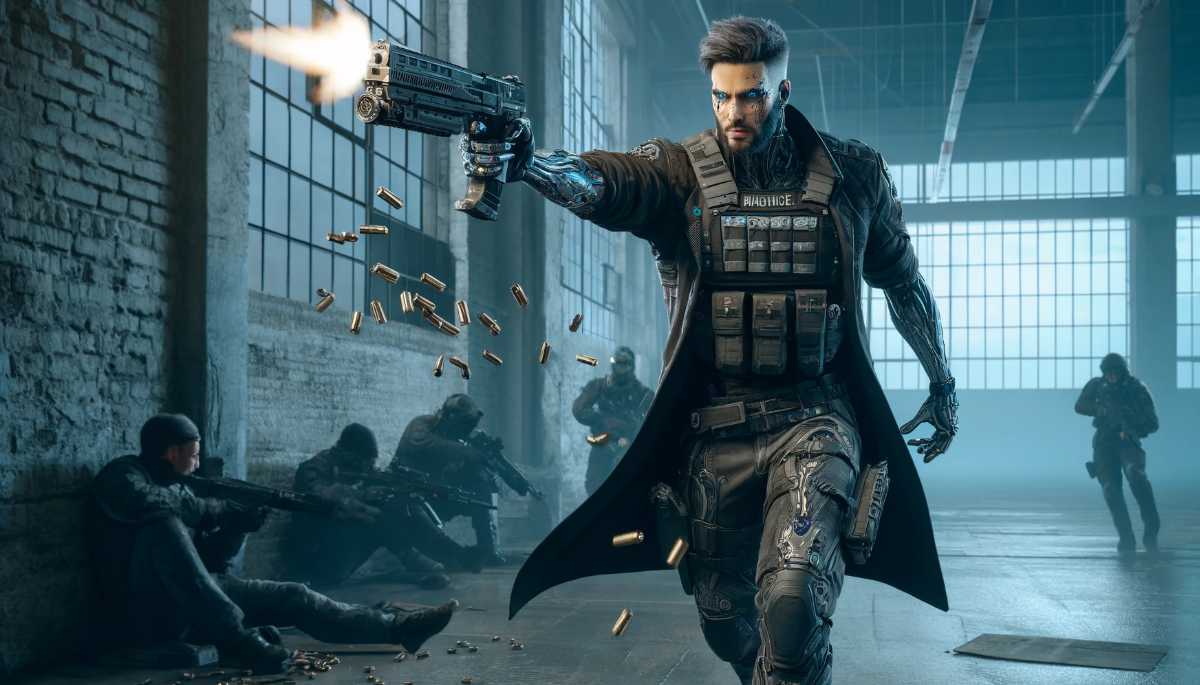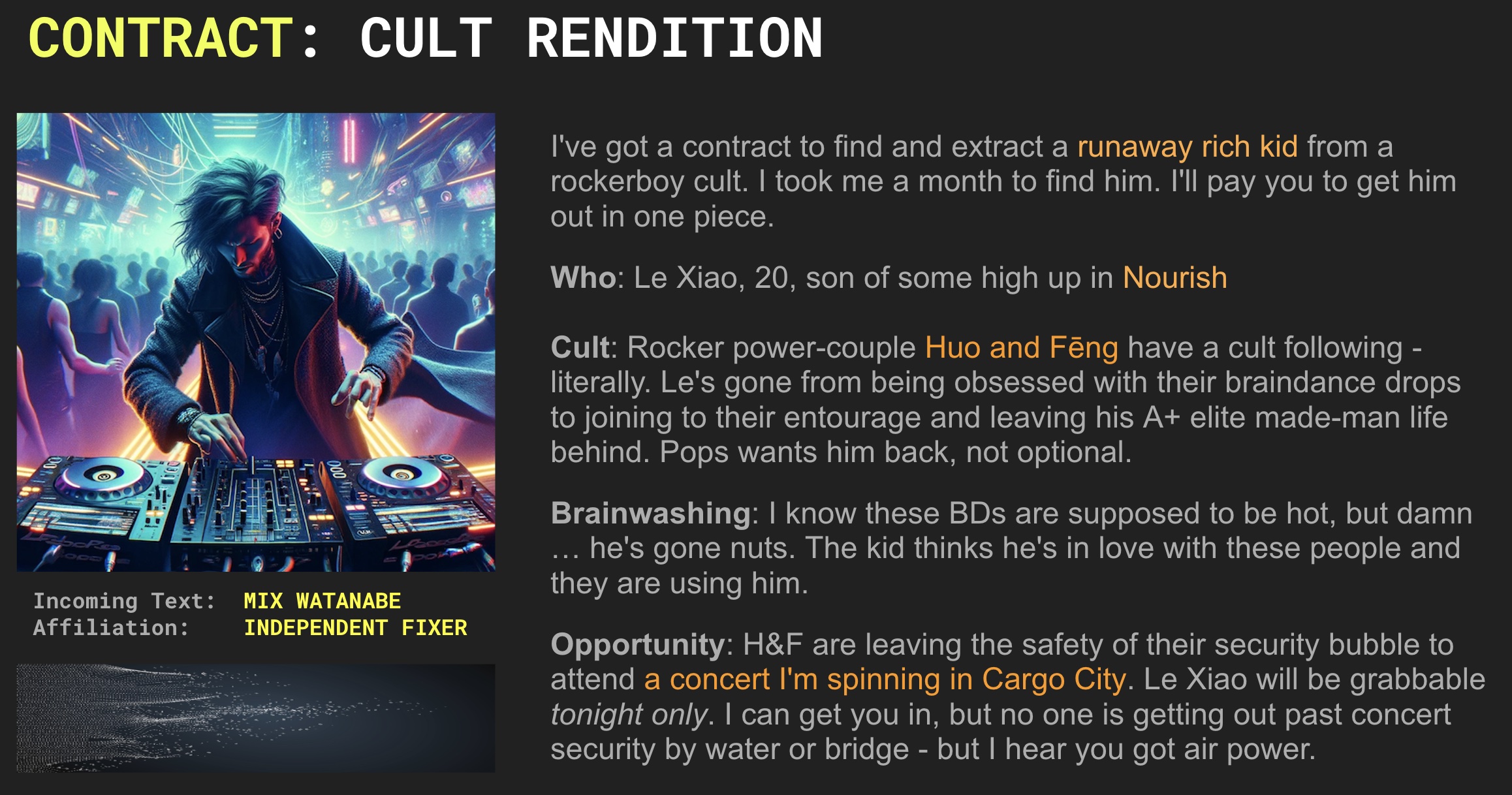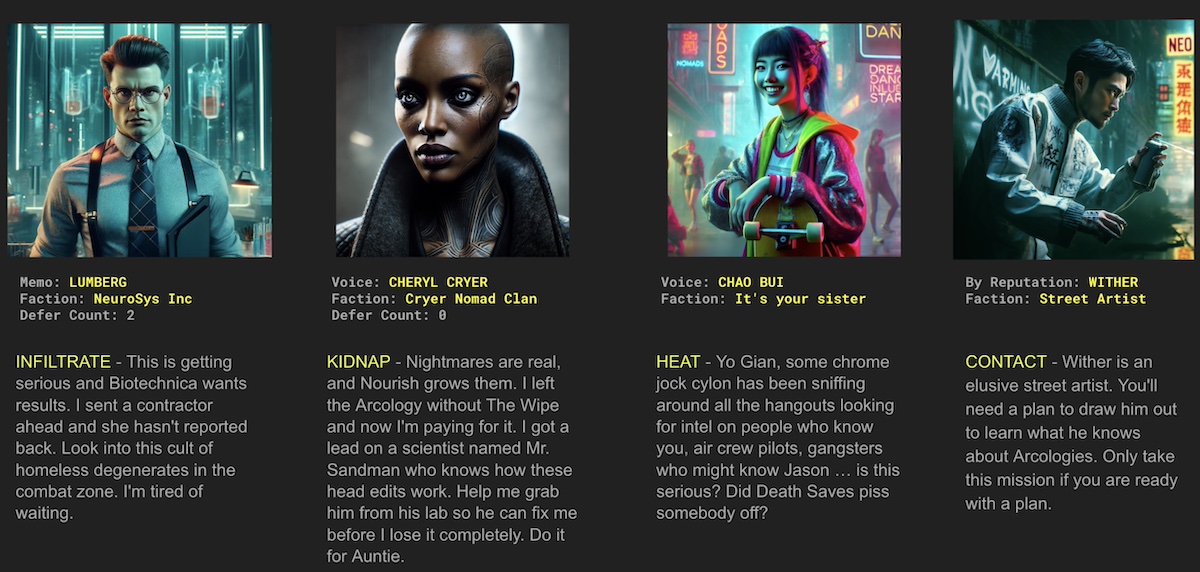
Cyberpunk RED impressions and Low-Prep Heists
I am now 4 games into a campaign of Cyberpunk utilizing the Cyberpunk RED rules. When proposing my current cyberpunk game I intended to run in either a Powered by the Apocalypse (PbtA) or Blades in the Dark (BitD) rules variant thinking that I wanted a rules light and low prep game. After buying several, I decided to stick with RED for the bigger equipment list and familiar resolution mechanic. BitD is fascinating, but the mental gymnastics to adjudicate rolls difficulties and resolve actions as well as the assumption that players want a sandbox where the characters take more direct control of the story didn’t match what I wanted this year and what my players indicated they wanted in pre-campaign surveys.
However, I went in knowing that I needed to avoid heavy prep and avoid having sessions devolve into in-game heist planning by the players if you’ve ever presented a fantasy D&D group with a heist mission you know the danger of a 4-hour session turning into 3 hours of planning that goes out the windows once the encounter starts.
Here’s what I ended up doing to keep things low-prep and fast-paced:
Fronts and Threat Clocks
A concept I first encountered in Dungeon World called. a Front, the main story is just a set of statements explaining the catalyzing circumstances and what will occur if the party does nothing. Between games, I review the Fronts and related factions and NPCs to see if the story has made me want to change any of the statements or alter the proactive things factions and characters are doing in reaction to the players.

I continue using Generative AI to make concept art for scenes and NPCs. It saves prep time.
I am also creating Threat Clocks to track the consequences of the player’s actions in a world that is supposed to react to them. This is the first time I’ve done this and so far I’m finding it a great creative aid.
How well this is working with RED?: Because I only have to consult the fronts and clocks between games, they aren’t overcomplicating anything about the inter
Limiting Shopping
How well this is working with RED?: Cyberpunk RED comes with a system for limiting shopping to a randomly generated night market and it has been fantastic for avoiding too many calories being spent shopping between and during sessions. While the setting of the game is post-scarcity, the tools of the edge runner trade are in limited supply, which makes in-combat loot and mixing in items from books like Black Chrome special.
Sessions Always Start with a Heist
Rather than having the game be a story told one day at a time, the beginning of each session always starts with a heist. We play monthly, so I want to make sure we get an interesting scenario that moves the story forward and has stakes every time we get together. To do this, once players assemble, we jump directly into the session’s mission.
I present a short mission brief from the fixer to get everyone on the same page quickly. I then go around the table once letting players make a single skill roll to attempt to gain more intel about what they are walking into. Then we start!

Session 2's mission briefing
I’ve tried to incorporate a retcon mechanic, but players have not taken to it quickly. I think I may need to put more impossible circumstances in front of them before they start using the mechanic.
How well this is working with RED?: Because RED already has a diminishing humanity mechanic I avoided adding a a second in-game meta currency like BitD’s stress. As a result, the retcon system isn’t mechanically integrated into what’s going on and I’ve felt the difference. However, I have found that my players are having no trouble jumping right into the missions without planning. It may be that they are a flying EMT crew, and are expecting to scramble into action rather than cautiously approach danger. The players even had a game where they resolved the heist entirely with stealth and social skill rolls. RED is holding up and not getting in the way.
Choosing the Next Session’s Mission
My players indicated that for this game they wanted to play a game that had a main storyline to explore, rather than a sandbox where conflict and crisis were in each hex-square direction. Between games, I advance clocks, adjust fronts, generate a night market, and then write three short Mission hooks for the players to choose from for the next session.
I look at each plot thread and decide on a heist or caper that would advance that story. I have a storyboard with swim lanes, but showing it would give away which missions have the same underlying front, which I’d like to keep from my players until that information is revealed in-game.
Each time they defer taking up a mission, I adjust the hook slightly, maybe advancing a threat clock or upping the difficulty or stakes of the mission. For the next session, the players have these heists to choose from:

It's like a choose your own adventure
How well this is working with RED?: The missions might not be as involved as a full mystery game or complex multi-location adventure. This story structure makes it easy for me to have what’s going on always just out of reach, which I like but hopefully isn’t too frustrating for the players. Hopefully, they are occupied dealing with the current heist! As a criticism, one heist after another has meant there is not a consistent antagonist to the party yet, so I probably need to work on that. I am also trying to figure out how to make the next mission choice more open to ensure I’m presenting equally attractive options rather than some missions being more related to a main plot than others.
So is it rules light and low-prep?
As a GM, I’m definitely avoiding heavy prep. The post-game write-up takes me an hour or two, and a lot of that is just my normal process of writing and archiving for my own enjoyment. Writing the options for the next session might take an hour. Once the players pick one I’m only spending an hour or two drawing up a map, generating some concept images, and jotting down some notes on potential complications or ways to mix in factions, NPCs, and the character’s backgrounds.
How well this is working with RED?: One thing that I have been worried about is prepping the combats. So far the sample adversary sheets from the main RED book and the ‘hardened mooks’ from a companion book have been all I’ve needed. I’m likely going to need to dip into other materials. That NPCs use the same rules as players is a negative for me in keeping things light and low effort.
So far so good.